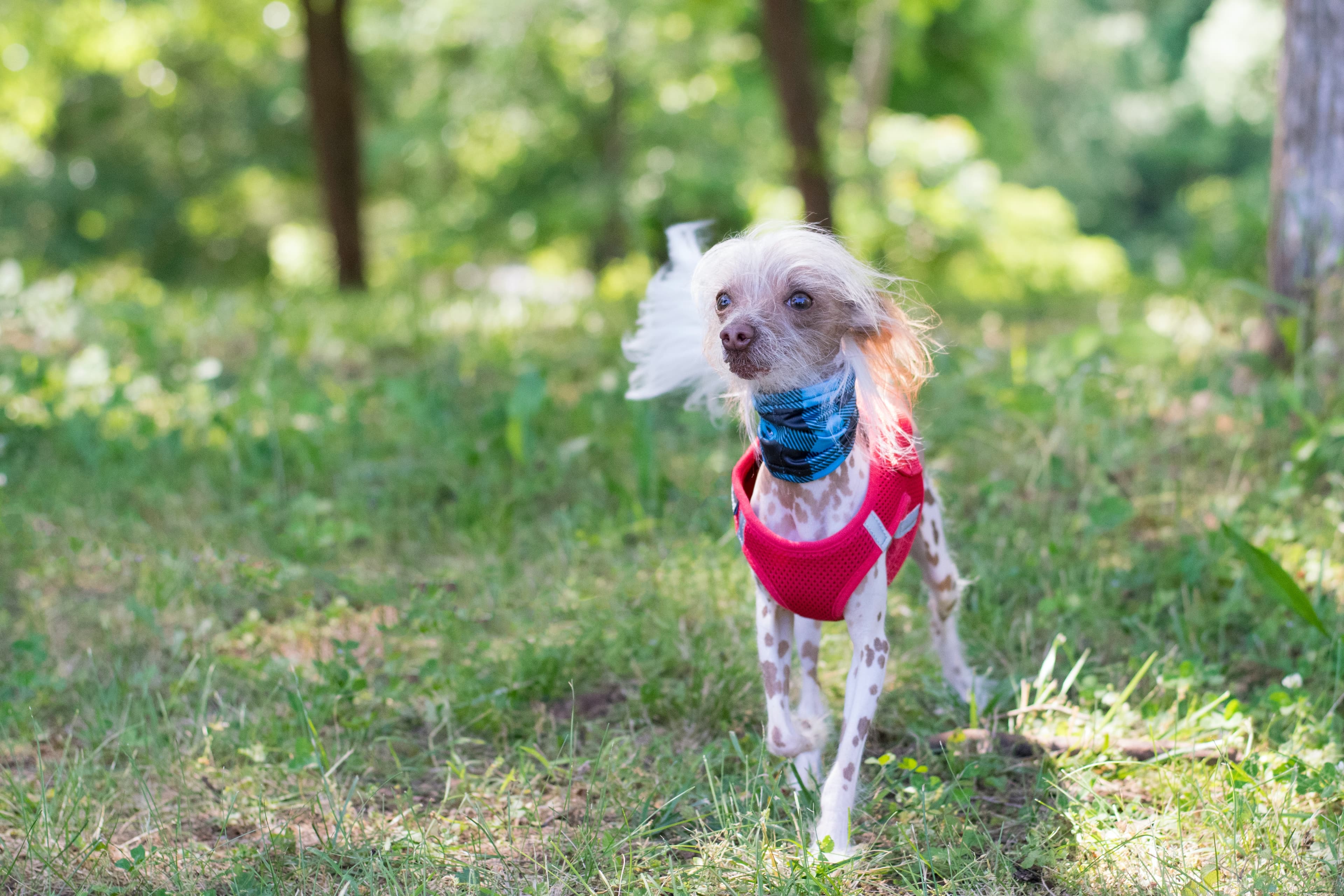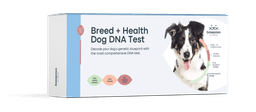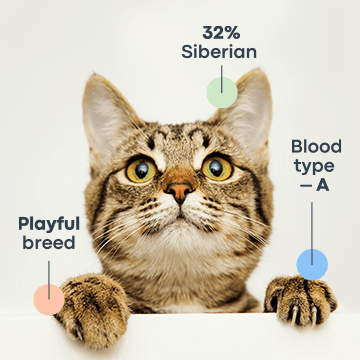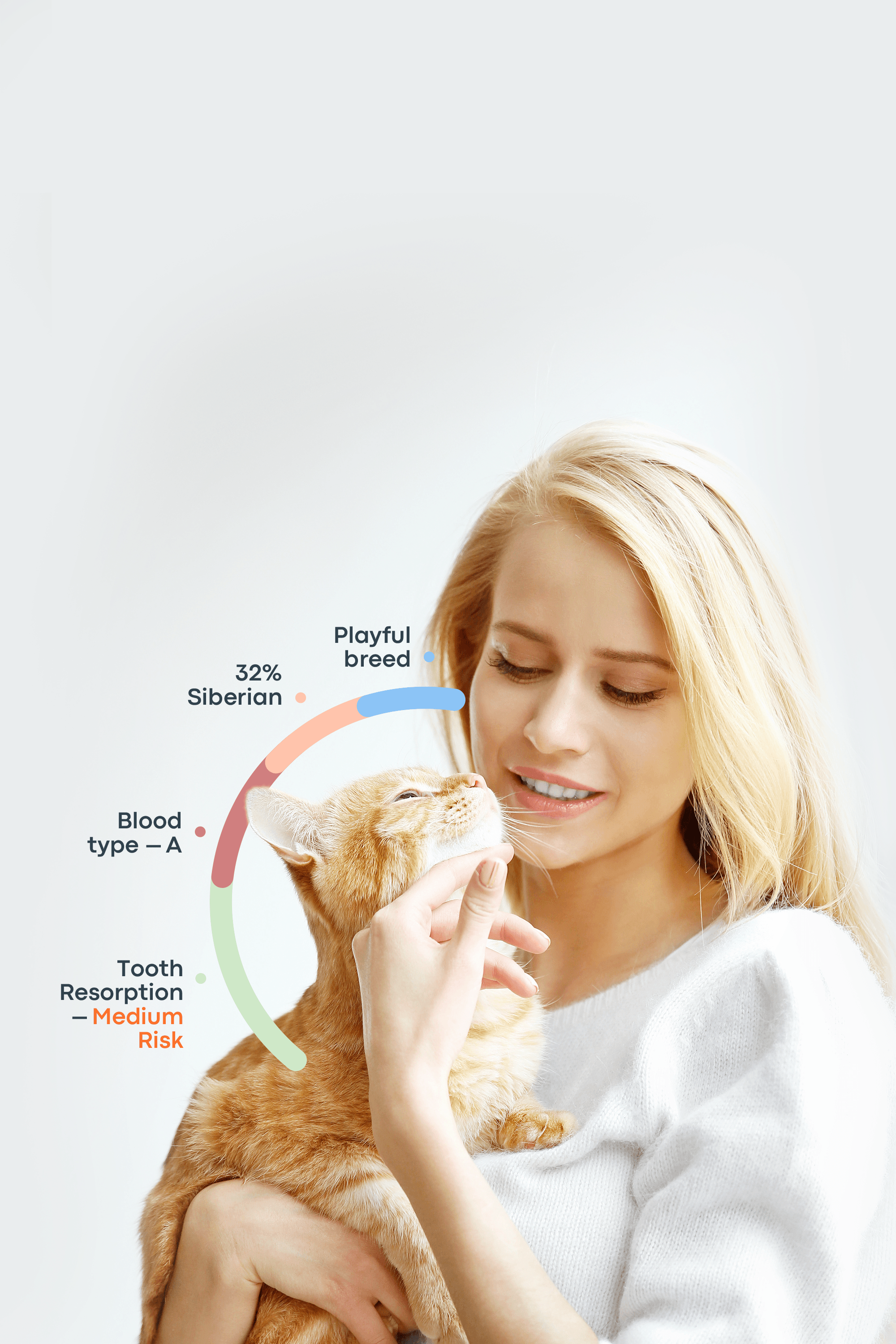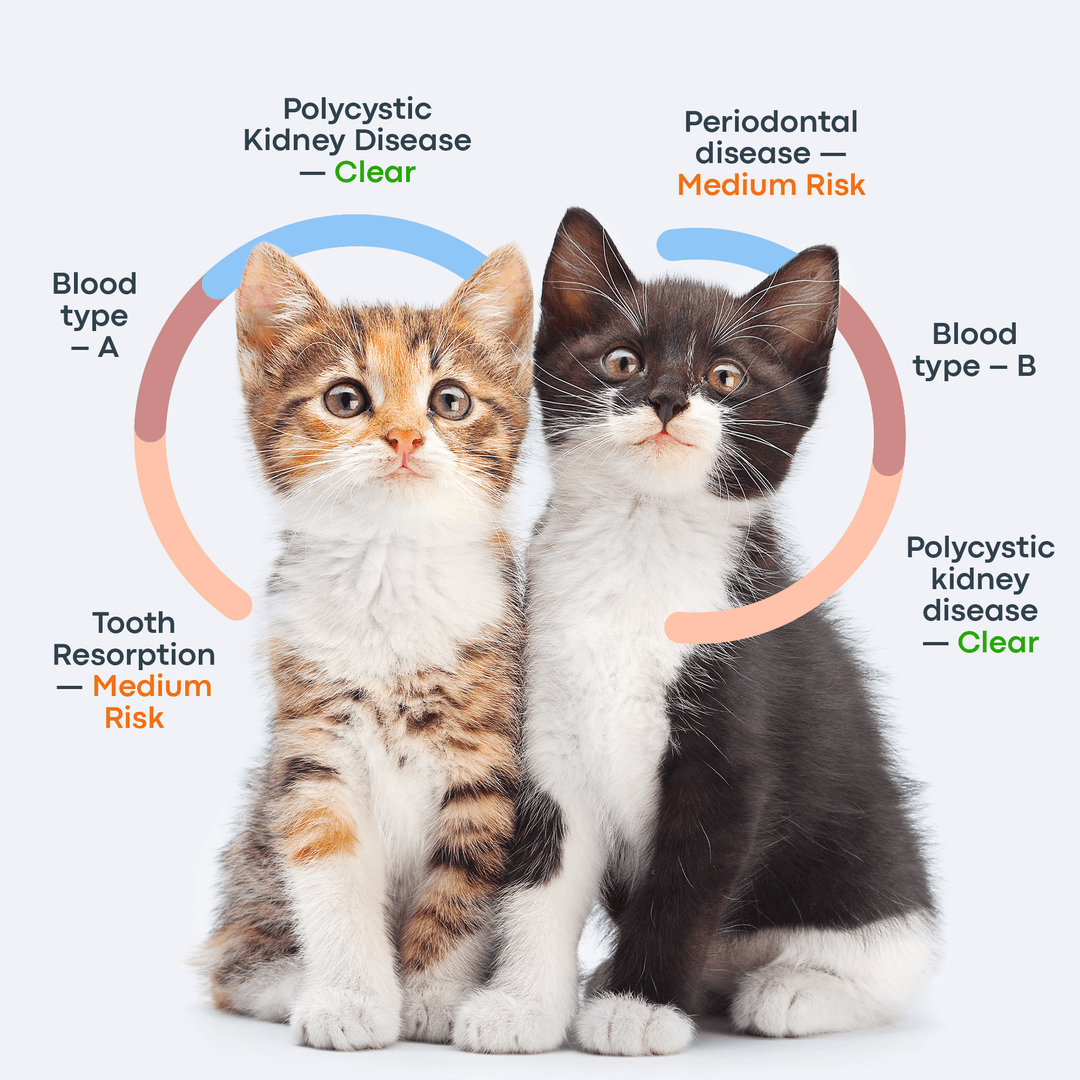There are more than 450 dog breeds around the world, each with its own unique traits and quirks. Some dogs are fluffy and adorable, while others are considered 'ugly'—a label that has even inspired events like the World’s Ugliest Dog contest.
Of course, just like beauty, ugliness is subjective and lies in the eye of the beholder. And despite their unconventional looks, these dogs can be just as loving, loyal, and wonderful as any other. Without further ado, here are some of the world’s most famously ugly dogs.
What Are the Ugliest Dog Breeds in the World?
Chihuahua: One of the Most Ugly Small Dogs with a Big Personality

Trait | Description |
Size | Smallest dog breed, 2–6 pounds |
Origin | Mexico |
Notable Features | Oversized eyes, large upright ears |
Coat Types | Variety of coat types (smooth or long) |
Appearance Note | Some find them unusual, others charming |
Chihuahuas are the smallest dog breed in the world, typically weighing between 2 and 6 pounds. Originating from Mexico, they’re often recognized for their oversized eyes and large, upright ears. While many find these features endearing, others may see them as unusual rather than adorable. Chihuahuas come in a variety of coat types and head shapes—some have rounded, apple-like heads, while others sport longer, deer-shaped profiles. Though not everyone finds Chihuahuas cute, beauty is in the eye of the beholder—what one person sees as odd, another might find irresistibly charming.
Chinese Crested: The Iconic Ugly Hairless Dog Breed

Trait | Description |
Size | Small to medium (around 10–13 pounds) |
Origin | China |
Notable Features | Mostly hairless with tufts on head, ears, and tail |
Coat Types | Hairless or coated |
Appearance Note | Often called “world’s ugliest dog” |
Chinese Crested dogs often win the title of “world’s ugliest dog.” Mostly hairless, they typically have tufts of fur on their heads, ears, and sometimes tails. Some also sport beards, whiskers, and irregularly spaced or pointed teeth, adding to their distinctive appearance. But don’t let their looks fool you—these dogs are playful, affectionate, and great with children. They make wonderful family pets. However, their exposed skin requires extra care. Cresteds are prone to sunburn and skin conditions like acne, so owners should regularly apply pet-safe skin products.
Pug: Wrinkly Face and Tongue Out — A Classic Ugly Dog

Trait | Description |
Size | Small to medium (14–18 pounds) |
Origin | China |
Notable Features | Wrinkled face, short nose, big round eyes |
Coat Types | Short, smooth |
Appearance Note | Considered “ugly-cute” by many |
Pugs have a one-of-a-kind look. With their wrinkled faces, short noses, and big, round eyes, they stand out in any crowd. Some people may find them odd, while others see them as adorably ugly-cute. Their flat faces, though charming, are known to cause various breathing issues. Still, those expressive eyes and squishy faces often win people over.
As with any other ugly dog, Pugs are more than just their looks. They are loyal, loving, and full of personality. These comics love being around people and make great companions. Long ago, Chinese emperors even kept them as royal pets or bestowed them as gifts for luck and wealth. Today, Pugs are highly cherished canine companions in homes around the world.
Brussels Griffon Pug (Brug): Ugly Dog Breed or Adorably Weird?

Trait | Description |
Size | Small (8–12 pounds) |
Origin | Belgium |
Notable Features | Quirky appearance, human-like facial expressions |
Coat Types | Rough or smooth |
Appearance Note | Known for unusual but charming looks |
A 6-year-old Brussels Griffon named Monkey won the ugliest dog in the world contest held in June 2017. The breed, featured in the Academy-winning movie As Good As It Gets, is known for its quirky appearance and almost human-like facial expressions.
Originally bred in Belgium to chase away rodents, Brussels Griffons have been selectively bred to emphasize their unique features. Despite their unusual looks, they are charming, sociable dogs with a cheerful disposition.
Bedlington Terrier: A Small, Ugly Dog with a Lamb-Like Look

Trait | Description |
Size | Medium-small (17–23 pounds) |
Origin | United Kingdom (England) |
Notable Features | Curly coat, lamb-like appearance, ear tassels |
Coat Types | Curly, dense |
Appearance Note | Often adored for soft, unique look |
Bedlington Terriers are far from being called one of the ugliest dog breeds; in fact, many people adore them for their soft, lamb-like appearance. Their curly coat and distinctive shape make them stand out in the best way. Even the little tassels on their ears aren’t just decorative; they once served to confuse and disorient prey during hunts.
Originally bred to hunt foxes, rabbits, and even otters. Bedlington Terriers were also valued for keeping homes free of vermin like weasels and polecats. Today, they are primarily kept as family pets and are generally great with children. Just keep in mind that they still have a strong prey drive and love to chase!
Neapolitan Mastiff: The Most Wrinkled and Ugliest Dog Breed

Trait | Description |
Size | Large (110–150 pounds) |
Origin | Italy |
Notable Features | Wrinkled skin, intimidating appearance |
Coat Types | Short, dense |
Appearance Note | Bred to deter intruders; featured in films |
According to PetMD, Neapolitan Mastiffs were selectively bred to be wrinkly and intimidating in order to deter intruders from estates in Italy. Their massive folds of skin also offered protection from bites during hunts involving large game animals—even lions. Despite their unusual appearance, these dogs have received plenty of screen time. A Neapolitan Mastiff named Hugo portrayed Fang, Hagrid’s loyal (and rather slobbery) dog in the Harry Potter film series.
Neapolitans can make excellent pets thanks to their loyal and protective nature. However, their large size and natural guarding instincts mean they require extensive training and early socialization.
Bull Terrier: A Strange Face and One of the World’s Ugliest Dog Breeds

Trait | Description |
Size | Medium (50–70 pounds) |
Origin | England |
Notable Features | Distinct egg-shaped head, downward-sloping face |
Coat Types | Short, dense |
Appearance Note | Known for “ugly-but-cute” look; Target mascot |
Selective breeding has dramatically altered the Bull Terrier’s appearance over the past century. Early Bull Terriers had more functional, traditionally shaped skulls, but today’s breed is known for its distinct egg-shaped head and downward-sloping face. Changes to their jaw structure have also contributed to a look that differs significantly from their early ancestors.
These traits, though unique, are the result of human-driven breeding preferences. Despite their unconventional appearance, Bull Terriers are often described as 'ugly-but-cute' and are beloved for their goofy, endearing personalities. They’ve even become pop culture icons—most notably as the mascot for the Target brand. Bull Terriers are entertaining, relatively low-maintenance, and make excellent family pets.
Xoloitzcuintli: Hairless Dogs That Rule the Ugly Dog Contests

Trait | Description |
Size | Small to large (10–55 pounds, varies by variety) |
Origin | Mexico |
Notable Features | Hairless coat due to dominant alleles; cultural significance |
Coat Types | Hairless or coated |
Appearance Note | Known as “hot water bottles” for warm bodies; skin needs special care |
The Mexican Hairless dog, or Xoloitzcuintli (pronounced show-low-eats-QUEENT-lee), has deep cultural and spiritual roots. In Aztec mythology, Xolos were believed to guide the souls of the dead to the underworld. The hairless variety results from the presence of a dominant mutation that affects coat development. These ancient hairless dogs have even been noted in the records of Columbus and other early explorers.
Xolos are often ideal for people with pet allergies, as their lack of fur reduces dander, trapped dirt, and odor. Their naturally warm bodies have earned them the nickname 'hot water bottles'—they’ve been cherished companions for people with joint pain and arthritis. However, their exposed skin requires special care, as they are prone to sunburn, dryness, and other dermatological issues.
Peruvian Inca Orchid: Rare Hairless Ugly Sighthounds

Trait | Description |
Size | Medium (15–30 pounds) |
Origin | Peru |
Notable Features | Hairless variety with irregular teeth; natural body warmth |
Coat Types | Hairless or coated |
Appearance Note | Ranked among top 10 ugliest breeds; graceful sighthound |
The Peruvian Inca Orchid, also known as the Peruvian Hairless Dog, is a rare and ancient breed. It has consistently ranked in the top 10 ugliest dog breeds list. They come in two varieties: coated and hairless, though the hairless type is more common. Much like the Xoloitzcuintli, this ugliest dog breed is cherished for their natural body warmth, often used to soothe aching joints.
The hairless variety typically has an incomplete or irregular set of teeth, giving them a quirky and distinctive appearance. Despite their unusual looks, Peruvian Inca Orchids are graceful sighthounds—agile, energetic, and requiring plenty of exercise to stay happy and healthy.
Japanese Chin: Ugliest Cute Dog With Bulging Eyes

Trait | Description |
Size | Small (7–11 pounds) |
Origin | Japan |
Notable Features | Flat face, large eyes, tongue often hangs out |
Coat Types | Long, silky |
Appearance Note | Known for “ugly-cute” look and unique ‘snizzling’ |
The Japanese Chin, also known as the Japanese Spaniel, is a small, lively dog full of charm. Historically, they were kept in the royal courts of Japan and China, often cared for by eunuchs. Their flat faces and large eyes give them a distinctive ‘ugly-cute’ appearance that many find endearing. As puppies, they often appear almost naked, since their full coat only grows in as they reach adulthood.
This ugly small dog breed frequently has its tongue hanging out permanently. Another unique trait is their ‘snizzling’—a soft puff of air expelled through their short noses, similar to reverse sneezing. Despite these odd habits, Japanese Chins are loving, gentle dogs that make wonderful companions. They form strong bonds with their families and enjoy being pampered.
Why Ugly Dog Breeds Are So Lovable
Why Ugly Dogs Win Hearts
Ugly dog breeds with unusual looks often touch people’s hearts in surprising ways. Their big eyes, hairless or wrinkled bodies, and other quirky features often remind us of vulnerable, helpless babies. This can trigger baby schema or Kindchenschema in some people and awaken a natural urge to care for and protect them.
Many so-called ugly dogs, like Pugs and Bull Terriers, have playful, comical expressions that make people smile. Their quirks and odd charm often draw people in and even help them bond deeply with their ugly pets. Often, ugly small dog breeds are abandoned or overlooked for adoption. This can trigger empathy and love in people who believe that they deserve even more love and give them a forever home.
Ugly Dog Pictures That Prove Beauty Is Subjective

It is not hard to see why Sam, the blind and toothless Chinese Crested, has won the world ugliest dog contest several times in a row.

Pugs are often contenders in the list of ugly small dogs.

What do you think of these ugly dogs pictures?
Ugly Dogs with Tongues Out: The Meme-Worthy Charm

Chihuahuas are often considered an ugly dog with tongue out.


Small Ugly Dogs That Make the Best Companions
Bull Terriers, Chihuahuas, Japanese Chins, and Pugs may not fit conventional standards of beauty, but they make wonderful pets. These small breeds are loving, loyal, affectionate, and easy to bond with. Despite frequently appearing on lists of the top 25 ugliest dogs, their compact size makes them ideal for apartments and small homes. They don’t require extensive exercise and are usually easy for both children and seniors to handle. Additionally, their size makes them excellent travel companions.
Breeds like Pugs are especially known for their playful and clownish behavior. They are also highly sensitive, often picking up on their owners’ moods and offering comfort. Their funny antics can bring smiles even on difficult days. While they love cuddling, many of these so-called “most ugly dog breeds” also enjoy playtime and games. Their lively personalities can be a great source of support for people dealing with stress, anxiety, or loneliness.
How to Choose the Right Ugly Dog Breed for You
Best Ugly Small Dog Breeds for Apartment Living
Some of the best ugly dogs breeds for small spaces or apartments are Pug, Japanese Chin, Chinese Crested, Brussels Griffons, and Chihuahua. Most of these dogs are low-to-moderate energy and do not need too much exercise. They are content being lapdogs and love snoozing at their owner’s feet all day.
Chinese Cresteds are calm dogs that do not bark too much. This makes them suitable for apartment-dwelling.
Grooming Needs of Ugly Hairless Dogs and Wrinkly Faces
Many so-called “ugly” dogs are hairless and require special grooming routines. This includes weekly baths with vet-approved shampoos to help prevent acne, blisters, and skin irritation. Contenders for the World’s Ugliest Dog Breed title—such as the Peruvian Inca Orchid, Xoloitzcuintli, and Chinese Crested—are also prone to sunburn and should always wear dog-safe sunscreen when spending time outdoors.
Wrinkly dogs like Pugs and Neapolitan Mastiffs tend to trap dirt and moisture in their skin folds. These areas should be cleaned regularly with pet-safe wipes or a dog-specific cleanser. Be sure to rinse thoroughly and dry the folds completely after bathing to prevent fungal or bacterial infections.
In addition to skincare, both hairless and wrinkly breeds require regular grooming tasks such as ear cleaning, nail trimming, gentle brushing (for coated areas), and eye care. Dogs with prominent or bulging eyes—like Pugs—are especially vulnerable to eye injuries. Never allow them to stick their head out of a moving car window, and consult a vet if their eyes appear red, cloudy, irritated, or swollen.
Temperament Traits of the Ugliest Dog Breeds
No two dogs are exactly alike, even within the same breed, so it's important not to overgeneralize when it comes to personality traits. That said, certain behavioral and temperamental characteristics are commonly seen across many of the so-called “ugly” dog breeds, due to shared genetic and historical factors.
For example, Pugs—often considered on of the ugliest dog breeds in the world—are typically laid-back and low-energy. At the same time, they are playful, comical, and incredibly affectionate. Despite their grumpy-looking faces, Pugs are social and friendly, thriving on human interaction.
Many ugly looking dogs like the Xoloitzcuintli and Chinese Crested, are also known for being affectionate, intelligent, and playful. They are generally quiet dogs that don’t bark excessively. These breeds tend to form strong bonds with their humans and are often easy to train thanks to their eager-to-please nature.
Some “ugly” breeds, like the Neapolitan Mastiff, are known for their strong protective instincts. They are naturally wary of strangers and can make excellent guard dogs. However, their size and guarding nature mean they require consistent training and early socialization to ensure they’re well-behaved and confident in various environments.
Are Ugly Looking Dogs Good with Kids or Other Pets?

A dog’s temperament and behavior are influenced by genetics, breeding, environment, training, and socialization—not by appearance.
Many so-called “ugly” dogs, such as Pugs, Brussels Griffons, and Japanese Chins, are known to be excellent companions for children. They typically have a low prey drive and tend to get along well with other dogs and household pets. With proper early socialization, they can even form positive relationships with cats.
Conclusion
If you are still wondering, “What is the ugliest dog breed?” we hope you have the answer. Whether or not a dog is ugly or unattractive is entirely subjective. No two people will find a dog cute, just as they won’t find them ugly.
Despite their weird looks, many of these dogs are quite popular, especially small ugly dogs like Chihuahuas and Pugs. They are full of personality and also quite compact and easy to handle. Some hairless dogs like the Chinese Crested and Xoloitzcuintli have consistently ranked as the ugliest dog breed in the world. All these are known for making excellent companions.
Frequently Asked Questions
What is the ugliest dog breed in the world?
Chinese Crested dogs have consistently topped the world’s ugly dog breed lists. Some other entries include Chihuahuas, Pugs, Xoloitzcuintli, and Neapolitan Mastiffs.
What makes a dog breed ugly?
Many so-called “ugly” dog breeds are intentionally bred to have unique or exaggerated features. Breeders may selectively emphasize traits like flat faces, wrinkled skin, protruding eyes, or sparse hair. These unconventional appearances are often sought after, either for aesthetic reasons or specific functional purposes. For example, the Neapolitan Mastiff was bred with exaggerated wrinkles and a fearsome look to deter intruders.
Are ugly dogs healthier or prone to more issues?
Unfortunately, many dog breeds labeled as “ugly” are more prone to health problems due to selective breeding. Flat-faced breeds, such as Pugs and Bulldogs, often suffer from brachycephalic syndrome, which causes breathing difficulties and may require corrective surgery. Hairless breeds like the Xoloitzcuintli or Chinese Crested are prone to skin issues including acne, blistering, dryness, and sunburn. These dogs often need extra care to keep their skin healthy and protected.
What is the world's ugliest dog breed ever recorded?
The Chinese Crested has most consistently claimed the title of the world’s ugliest dog in competitions, particularly in the annual World’s Ugliest Dog contest. Chihuahuas and Neapolitan Mastiffs are also frequent contenders, often placing high due to their unusual features and exaggerated traits.
Why are ugly dog breeds becoming so popular?
Evolution plays a huge role in why we find unattractive dogs cute. This is termed as “baby schema” as an ugly hairless dog often looks like a helpless infant and triggers an affectionate response or a desire to protect and nurture them in most humans.
